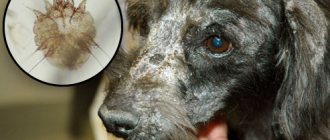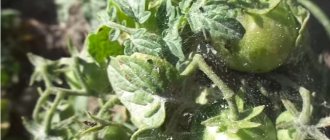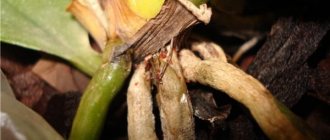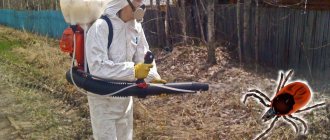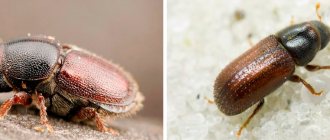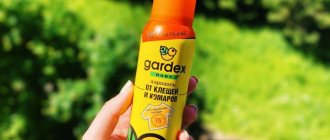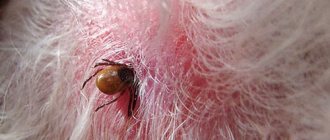Causes of appearance and what are the dangers?
The appearance of a mite on an orchid can be caused by several factors:
- presence in ready-made soil purchased in a store;
- planting a flower in an untreated container;
- hitting the windowsill through a window with a gust of wind;
- low level of air humidity;
- incorrect watering regime or insufficient frequency;
- oversaturation of the soil with minerals and other useful elements as a result of too frequent fertilizing.
Ticks also enter the room on human clothing.
Preventive measures
To prevent ticks from getting on an orchid, you need to follow a number of simple rules:
- Water the plant regularly (as the top layer of soil dries out).
- Maintain indoor air humidity. It must be at least 60%.
- Periodically shower the flower with a hot shower (the water temperature should be comfortable for the skin of your hands). This will reveal the cobwebs and partially wash away the parasites.
- Remove dry leaves and flower stalks in a timely manner.
- Regularly inspect the plant for damage.
The mite is extremely dangerous for the orchid , because it can not only spoil its appearance, but also destroy it. Therefore, it is important to follow preventive measures and act immediately if a parasite is detected. If there are few pests, there is always a chance to restore your pet. Well, if the flower is already badly damaged, you can transplant it into a new substrate or try to root healthy shoots.
Varieties: what they look like from the photo
There are several types of mites that attack orchids, each of them has its own distinctive characteristics.
Red spiderweb on leaves
Tetranychus cinnabarinus. This type of arthropod pest is considered the most dangerous due to its increased resistance to insecticides. A female mite can lay 6 to 7 eggs per day, and up to 150 eggs per month. The most favorable environment for the reproduction of red spider mites is an excess of nitrogen in the soil. Its distinctive features are the yellow, orange or red color of the body.
Most often, the pest settles on the outside of the leaf.
Armored
Oribatida mites. Externally, the oribatid mite resembles a small dark pea. On average, its size is 0.8 mm. Color can vary from dark brown to brown and black. Adult parasites and larvae live in the soil and feed on its constituent components.
When there is a deficiency of nutrients, orchid mites infect orchid leaves. Phalaenopsis are especially susceptible to attacks from these arthropods. Ideal conditions for pests to reproduce are high soil moisture and lack of drying.
White cobweb or false
Tetranychus urticae. The false or white spider mite gets its name from the white web it produces. Due to its very small size (0.25-0.3 mm), it is almost impossible to see this pest. Its presence on an orchid can be detected by the presence of cobwebs.
In advanced cases, spider mites form large colonies, the color of which varies from green to red. From the first days of its appearance, this type of parasite begins to actively destroy the orchid.
Onion root
Rhizoglyphus echinopus. Externally, root mites resemble small spiders. Pests have three pairs of legs, an oval body and sharp antennae. Their main feature is their high endurance, which allows them to remain without food for a long time; their main diet is underground parts of the plant and organic remains.
The distinctive features of bulb mites are a large body (1-1.5 mm) with a cloudy, glassy color.
The parasites are quite prolific: one female lays up to 300 white oval eggs. Favorable living conditions for them are abundantly moist soil with excess fertilizer content. In the process of their life activity, these arthropods turn the orchid roots into dust, which leads to the death of the plant.
Flat-bodied
Tenuipalpidae. Flat-bodied mites are distinguished by their small size (up to 0.3 mm) and an oval, slightly flattened yellow-red body covered with miniature bristles. The presence of these pests can be detected only after the formation of colonies or by the affected plant fragments.
Do orchid mites harm orchids?
In fact, oribatid mites do not cause obvious harm to either orchids or other plants. Oribatid mites Oribatida are one of those living creatures that make the soil structure by grinding, actually chewing, fallen leaves and all organic debris, including feeding on fungi and algae.
Among oribatid mites there are no species that feed on living tissue, even if it is young shoots. In fact, panic and myths were born mainly on Russian-language resources. There is no mention among orchid societies in Canada or the United States that orchid mites can in any way injure young seedlings of phalaenopsis or other orchids.
As an example, so as not to be unfounded, I will quote Paul Johnson, a professor of entomology at South Dakota State University, from a work on November 22, 2008: “Quite often, many species of harmless mites are found with orchid crops, which feed on fungi, bacteria and rotting organic material. There are also several beneficial mites that are predators and feed on herbivorous mites, insect pests and other critters. Oribatids, which look like tiny round, dark-colored bugs, feed on fungi on the roots of plants, products of decay of organic materials."
They hide under the dry scales of bulbs and bulbs.
Black shiny oribatids measuring just under 1 mm.
But oribatid mites can cause indirect harm - they are carriers of helminth eggs, as well as nematodes. Therefore, it is advisable to prevent their appearance in soil for flowers. To do this, it is enough to heat the prepared substrate in the oven, scattered on a baking sheet in a layer of about 5 cm at 200 degrees for 20-30 minutes to destroy pests and pathogens.
Oribatid mites carry fungal spores and bacteria on their legs, and they crawl not only on healthy tissue - if a leaf or root breaks off on a plant, the mites will immediately climb onto the fresh scrap. And at the same time they will bring in a bunch of microbes. Therefore, all breaks and cuts on the orchid must be dried, but not with brilliant green, but with colloidal sulfur or crushed birch charcoal.
Real, simply lethal damage to the leaves of orchids and other plants is caused not by oribatid mites, but most often by a broad mite - Polyphagotarsonemus latus - a microscopic mite that you cannot detect even with a magnifying glass, only with a microscope. Signs of its appearance are deformation of the tops of shoots, ulceration and curvature when unfolding a young leaf. The saliva of broad mites is toxic and the signs are similar to a chemical burn: shriveled brown edges of budding leaves and buds. Less commonly, yellowing and gray spots. It is the broad mite and its brother, the cyclamen mite, that are the main and main pests in greenhouses, including industrial greenhouses with orchids.
Two types of mites were found on this orchid: a spider mite, which produces gray stripes, and a broad mite (close-up).
The broad mite has characteristic eggs - completely transparent with white bumps (through a microscope).
Signs of infection
The presence of a mite on an orchid can be determined by the following signs:
- the presence of whitish or small gray inclusions on the leaf plates;
- the formation of a silvery web on the back of the leaves;
- the appearance of brown spots (usually they are present on the axils of the leaves or at the base of the stem);
- drying of sheet plates along the edges with subsequent deformation;
- yellowing, curling and falling of leaves;
- the appearance of rot on the lower part of the stem (in the form of wet dark spots, which over time transform into depressions and holes);
- shortened peduncles, unusual for orchids.
When you press on the affected areas, a red-brown liquid appears.
Description of pests
Orchids are one of the most beautiful flowers in the world, but these delicate plants are often attacked by various parasites.
There are certain prerequisites for the development of such negative phenomena. Entomologists say that a tick is not an insect, but an arthropod. The peculiarity of these creatures is their phenomenal survival rate in a wide variety of conditions. The difficulty is that the false spider mite is microscopic in size and it is extremely difficult to see it on flowers. Its parameters do not exceed half a millimeter, and the color of the body depends on the color of the plant it eats. The chitinous cover of these insects can be red or green.
Adult mites have eight legs, but their movement throughout the plant is extremely leisurely. While eating an orchid, the mite simultaneously weaves a web that envelops the stems and buds of the plant. If there is a cobweb, this means that new generations of pests will be born in the near future.
This parasite is dangerous because it multiplies exponentially. In just 2-3 weeks, the larva turns into an adult. This creature lives no more than 40 days, but this is enough for it to destroy the plant. The favorite delicacy of such insects is plant juices: the mite bites through the epidermis of the orchid and injects it with a special enzyme that dissolves the cells. A nutritious biomass appears, which the parasite sucks out.
At the site of the lesion, yellowness, white plaque, and cobwebs form, and after a short time this area dies. If the finest cobwebs appear on the flowers and buds of an orchid, this indicates that there are many parasites on the plant; urgent measures must be taken to eliminate them. Various parasites additionally penetrate into areas affected by ticks:
- viruses;
- fungus;
- pathogenic bacteria.
Generations of mites live in large numbers in fertile soil; they can be seen with a magnifying glass. The following types of mites “love” the orchid.
- Root. This parasite has 6 legs, a mustache and a body shaped like an elongated oval. It has good resistance and can go without food for several months. A favorite delicacy is the root system of various plants.
- Red spider mite. One of the most common. Tolerates poisonous drugs well. The color of the calf can be yellow and even bright orange.
- Bulbous. It has a size of no more than 0.5 mm, and this parasite is extremely clumsy. The color is dark brown, the body is oval. There are short bristles on the body.
- Armored mite. Looks like a spider and feeds on plant roots.
There are also a number of parasites that are very harmful to orchids.
- Thrips. These are gray flies that appear due to overdrying of the plant. Thrips feed on sap, so the flower dies within a week or two.
- Mealybugs. They manifest themselves with a white coating that looks like frost. They also feed on flower juice, representing a medium degree of danger.
- Shield. These are flies that are covered with a dense black shell. When an insect is in the larval stage, it is not easy to detect it; you need to use a magnifying glass.
- Common aphid. Appears on many plants. The insect is very fond of young leaves and flower petals. Due to their size, aphids are clearly visible on the leaves.
- Fools. These are microscopic beetles that live in the substrate and are very fond of the root system. They reproduce if there is low temperature and abundant watering.
How to get rid of it: control measures
When the first signs of the presence of a mite on an orchid are detected, it is necessary to begin eliminating it without delay, since ignoring this problem will lead to the death of the affected plant and massive infection of other indoor crops.
Procedure:
- isolation of the affected specimen in a separate room;
- rinsing under running warm water;
- removing moisture from the sinuses and drying the plant.
If the white coating cannot be washed off with water, it is recommended to wipe the leaf blades with cotton swabs or pads soaked in water. To increase humidity, it is recommended to water the epiphyte, wrap it in plastic wrap and leave it in this form for no more than three days.
If oribatid mites are detected, several manipulations must be performed:
- remove the plant from the pot and clean it from the soil;
- dilute liquid laundry soap (1 tbsp/1 l) in warm water;
- soak the root system in the prepared solution and leave for 30 minutes, periodically shaking off mite eggs from the roots;
- repeat the soaking procedure 2-3 times, replacing the solution with a fresh one;
- remove damaged fragments;
- treat cut areas with activated carbon;
- plant the flower in clean soil.
After providing first aid to the orchid, it is necessary to begin its radical treatment.
Insect activity
Ticks got their name from the art of weaving webs. Another species of arthropod does not have this ability. Because of this, they began to be called false or red ticks (Tenuipalpus pacificus). Arachnids feed on plant sap. They bite through the leaf, inject a special liquid inside it, which, when it enters the epithelium of the leaf membrane, forms a nutritious juice. This activity of mites is reflected on plant leaves as follows:
- they gradually turn yellow;
- sometimes small translucent dots appear on the surface of the leaf plate;
- the leaf begins to rot or dry out.
The more greenery an orchid loses, the worse photosynthesis becomes. The development process slows down, then stops and after some time the plant dies. In addition, the appearance of the flower deteriorates greatly if a colony of pests instead of leaves attacks the peduncles.
Conditions for reproduction
For arachnids to reproduce, temperatures above 25 degrees, dry air and a humidity level of up to 40% are required. Ticks go through 5 stages of development :
- The female lays eggs in groups of 200 each. The number of groups may vary. The eggs are round in shape and have a diameter of 0.15 mm. The masonry is located in different places. Usually this is the root system of plants, the underside of leaves, even the walls of the pot and the windowsill.
- After 3 days, a pink larva appears. It is slightly larger than an egg and has 6 legs. The arthropod remains in this stage for 24 hours.
- Then comes the nymph stage. A female individual goes through 3 molts and 2 periods of development, a male – 3 moults and 1-2 periods of development.
- After 7 days, the larva turns into an imago (adult) and is ready to reproduce. The female is slightly larger than the male.
The lifespan of the parasite lasts 15-30 days, if environmental conditions contribute to this. At a temperature of 20 °C, the arachnid will need up to 20 days to develop. The warmer the room, the faster the adult insect appears. The development stage takes no more than 8 days at air temperatures from +25 to +30 °C. Flat beetles do not require special conditions for reproduction if they are in closed ground. Their development occurs all year round.
Important! If the conditions in which the egg laying is poor, the development process is suspended. Their vital functions can be restored again even after 4-5 years.
Hitting the house
Penetration of arachnids into a human home occurs in different ways:
- with a new plant brought from a flower shop;
- through soil contaminated with eggs and larvae;
- through street clothes;
- Sometimes insects fly into the house on a cobweb through an open window.
Treatment with folk remedies
The use of drugs prepared according to folk recipes allows you to get a positive result only with a slight spread of pests.
When using this method in the fight against spider mites, it is important to remember that the parasites can only be completely destroyed through chemical treatment.
The most effective folk remedies are:
- Garlic infusion (170 grams of garlic cloves are poured into 1 liter of water and infused for 5 days).
- Tincture of dandelion roots (to prepare the composition, 30 grams of roots are soaked in 1 liter of cold water).
- Decoction of citrus fruits (100 grams of citrus peels are poured with water, boiled and infused for three days).
- Onion tincture (15 grams of pulp is poured into 1 liter of water and left for 7 hours).
Advantages of folk remedies:
- availability;
- ease of preparation and use;
- environmental cleanliness.
General tips for treating and preventing orchid diseases
General tips for treating and preventing orchid diseases will help you take care of the health of the plant. So, it is important to know the following:
- Dry the soil where the plant grows from time to time.
- Spray the flower regularly to maintain a comfortable humidity level. At the same time, prevent drops of moisture from getting into the sinuses of the plant, as this will lead to rotting of the orchid.
- Normalize the watering regime. Remember that the plant needs watering once every seven days. In summer this amount can be increased to twice a week, and in winter it can be reduced to once every 10-14 days.
- Take care to maintain normal moisture, since a comfortable environment for ticks to form is dry air. You can further increase the humidity by placing a container of water at room temperature near the plant.
- You need to use only fresh and high-quality substrate to prevent the introduction of tick eggs.
- Regularly inspect the leaves and stem of the orchid to immediately notice the problem and begin to solve it.
Caring for an orchid is not as difficult as it might seem at first glance. In fact, it is enough to maintain conditions acceptable for the plant: room temperature 22-26 degrees, humidity about 40%-50% (more is possible, but up to 70%), illumination through soft diffused light for 8-10 hours, absence of drafts and direct sunlight. And then the likelihood of ticks and other pests will be minimized.
If the parasites do take root on the plant, now you know how to quickly and effectively fight them. Try to start fighting when ticks first appear, preventing the colony from growing.
To understand how to effectively remove mites that have infested an orchid, you should watch the video below.
Chemicals: how to treat?
The main advantages of chemicals are as follows:
- providing effective protection against pests;
- ability to destroy large colonies;
- long-term effect (up to 2 weeks from the date of treatment).
The disadvantages include toxicity.
The most popular chemicals:
- Nissoran - contains the active component hexythiazox, highly effective in the fight against ticks at all stages of development. To treat the plant, 1 gram of powder is dissolved in 1 liter of water.
- Actellik - includes pirimiphosmethyl. To prepare a working solution, 1 ml of the drug is diluted with 1 liter of water. Treatment is performed 2 times with an interval of 10 days.
- Sunmite is a yellow-white powder containing pyridabene. Before use, it is diluted with water in a ratio of 1 g: 1 liter. Eliminates ticks at all stages of development.
- Anti -mite is an intestinal-contact toxic chemical that contains malathion. To prepare the solution, it is diluted with water in a ratio of 1 ml per 1 liter.
Literature
- Bulanova-Zakhvatkina E. M. Oribatid oribatid mites. - M., Higher School, 1967. - 254 p.
- Armored mites: Morphology, development, phylogeny, ecology, research methods, characteristics of the model species Nothrus palustris CL Koch, 1839. / Krivolutsky D. A., Lebrun F., Kunst M. et al. M.: Nauka, 1995. - 224 With. ISBN 5-02-005551-9
- Domes, K.; Althammer, M.; Norton, R.A.; Scheu, S.; Maraun, M. 2007. The phylogenetic relationship between Astigmata and Oribatida (Acari) as indicated by molecular markers.
Experimental & applied acarology, 42: 159–171. doi: 10.1007/s10493-007-9088-8 - O'Connor, B. M. 1984. Phylogenetic relationships among higher taxa in the Acariformes, with particular reference to the Astigmata.
pp. 19-27 in Griffiths, DA; Bowman, C.E. Acarology VI, Vol. I. Ellis-Horwood Ltd., Chichester. - Norton, R. 2004. Molecular phylogeny of oribatid mites (Oribatida, Acari): evidence for multiple radiations of parthenogenetic lineages.
Experimental and applied acarology, 33: 183–201. doi: 10.1023/B:APPA.0000032956.60108.6d - Travé J., 1963. Écologie et biologie des Oribates (Acariens) saxicoles et arboricoles.
Vie et Milieu, suppl. 14:1-267.
Biological agents
The advantage of biological agents is the ability to treat plants throughout the year and the inability to induce resistance in parasites. The disadvantage is that it is effective only at the initial stage of the lesion. The most common biological agents:
- Bona Forte - created on the basis of Dalmatian chamomile flowers. Allows you to get excellent results in the fight against all types of ticks.
- Akarin - contains the active ingredient avertin N, available in ampoules. Before use, dilute with water: 1 ml/1 liter.
- Fitoverm - available in the form of a concentrated suspension, contains the biopesticide aversectin C. Maintains a protective effect for 2 weeks from the date of treatment.
Notes
- M. S. Gilyarov, F. N. Pravdin Animal Life Volume 3
. — Publishing house “Prosveshcheniye”, 1984. 2nd revised edition. Page 74 - Proctor H. (1998). [tolweb.org/Acariformes/2563/1998.08.09 Acariformes. The "mite-like" mites.] in The Tree of Life Web Project. (English) (Retrieved October 23, 2010)
- Anderson JM, 1978. Inter- and intrahabitat relationships between woodland Cryptostigmata species diversity and the diversity of soil and litter microhabitats.
Oecologia, 32: 341–348. - Wallwork JA, 1983. Oribatids in forest ecosystems.
Annual Review of Entomology, 28: 109–130. - Travé J., 1963. Écologie et biologie des Oribates (Acariens) saxicoles et arboricoles.
Vie et Milieu, suppl. 14:1-267. - Ito M., 1986. An ecological survey on arboreal oribatid mites (Acari: Oribatida) in a subalpine coniferous forest of Shiga-Kogen, Central Japan.
Edaphologia, 35: 19-26. - Winchester NN, Behan-Pelletier VM, Ring RA, 1999. Arboreal specificity, diversity and abundance of canopy-dwelling oribatid mites (Acari: Oribatida).
Pedobiologia, 43: 391–400. - Walter DE, Behan-Pelletier V., 1999. Mites in forest canopies: filling the size distribution shortfall?
Annual Review of Entomology, 44: 1-19. - Behan-Pelletier V.M., Eamer B., Clayton M., 2001. Mycobatidae (Acari: Oribatida) of Pacific Northwest canopy habitats.
The Canadian Entomologist, 133: 755–775. - Domes, Katja;
Norton, Roy A.; Maraun, Mark & Scheu, Stefan [www.pnas.org/content/104/17/7139 Reevolution of sexuality breaks Dollo's law] (English) // PNAS. - 2007. - Vol. 104, fasc. 17. - P. 7139—7144. - Walter, David Evans, ed. [insects.tamu.edu/research/collection/hallan/Acari/Family/Oribatida1.htm Oribatida Species Listing]. Biology Catalog. Texas A&M University. Retrieved on August 26, 2010.
- Schatz, Heinrich; Valerie M. Behan-Pelletier; Barry M. OConnor and Roy A. Norton. (2011). Suborder Oribatida van der Hammen, 1968. In: Zhang, Z.-Q. (ed.) 2011: Animal biodiversity: an outline of higher-level classification and survey of taxonomic richness. Zootaxa, 3148: 141–148. ISBN 978-1-86977-849-1 (paperback) ISBN 978-1-86977-850-7 (online edition)
- Valin G. Marshall, R. Marcel Reevrs and Roy A. Norton. (1987). [journals.cambridge.org/action/displayAbstract?fromPage=online&aid=8560881 Catalog of the Oribatida (Acari) of continental United States and Canada.] Memoirs of the Entomological Society of Canada / Volume 119 / Supplement S139 / January 1987, pp 1 -418.
- [www.ucm.es/info/zoo/Artropodos/Catalogo.pdf Subías, LS: LISTADO SISTEMÁTICO, SINONÍMICO Y BIOGEOGRÁFICO DE LOS ÁCAROS ORIBÁTIDOS (ACARIFORMES: ORIBATIDA) DEL MUNDO (Excepto fósiles)] Version: April 2009
- Norton, R.A.; Behan-Pelletier, V.M. 2009: Chapter fifteen. Suborder Oribatida. pp. 430—564 in: Krantz, GW; Walter, DE (eds) A manual of acarology. Third edition. Texas Tech University Press, Lubbock Texas.
Flat beetles
Tenuipalpidae - or false spider mites (not to be confused by name with the flat beetle Cucujidae), of the genus Brevipalpus Brevipalpus and Tenipalpus Tenuipalpus. They are very similar in size and shape to spider mites; they also sit on the underside of leaves and move slowly. Their sizes are very small, from 0.1 to 0.4 mm.
If these images are not enough for you, you can also look at the spider mite photo.
In many species, colonies consist only of females, which hatch from unfertilized eggs. Development occurs in three stages: larva, protonymph and deutonymph. Maturation from egg to adult tick takes 12 to 24 days. The eggs of some species of flat beetles can be seen with the naked eye and appear as clusters of reddish-orange color. Larvae of flat beetles are six-legged, orange-red, translucent, nymphs are opaque, and dark spots appear on the body. Adult ticks are brown, eight-legged, and have a flattened body. Adult females live for 5 - 6 weeks, producing 6-10 generations per season. Many flat beetles have a pause (rest) of 1-2 days between moults; during this time they do not feed and remain motionless on the leaves.
The flat beetles are brown, but very small, looking like brown grains. The puncture sites where the flat beetles are attached are dark dots. Flat beetles do not form webs. They do not suffer from high humidity.
Plants affected by flat beetles differ in the nature of their spots. The fact is that most flat beetles have toxic saliva, which, when it enters plant tissue, causes necrosis. Therefore, brown or gray-brown spots appear on the upper side of the leaf. First small, pinpoint, 1-2 mm, then increasing in size. Leaves are often deformed, and in plants with dense, fleshy leaves (Saintpaulia, Gloxinia), the edges of the leaves begin to turn inward.
Worst of all, flat beetles are the main carriers of viruses (mosaic and ring spot). But what’s even worse is that the ideal conditions for the reproduction of flat beetles are a temperature range of 25-30°C and fairly high air humidity, at least at 70-80% air humidity they are comfortable, while spider mites at such humidity inhibit their development .
Dependence of the rate of mite metamorphosis on temperature:
- at an ambient temperature of 15°C: eggs mature in about 2 weeks, about another week for each subsequent stage: larvae, pronymphs and deutonymphs, a total of 33-36 days from egg to adult.
- at an ambient temperature of 20°C: eggs mature for about a week, about 3 more days for each subsequent stage: larvae, pronymphs and deutonymphs, a total of 2 weeks from egg to adult.
- at an ambient temperature of 30°C: eggs mature in about 3 days, about another 1.5 days for each subsequent stage: larvae, pronymphs and deutonymphs, only a week from egg to adult.
